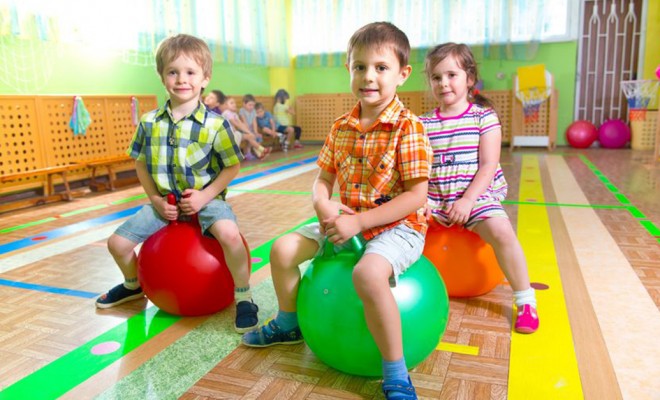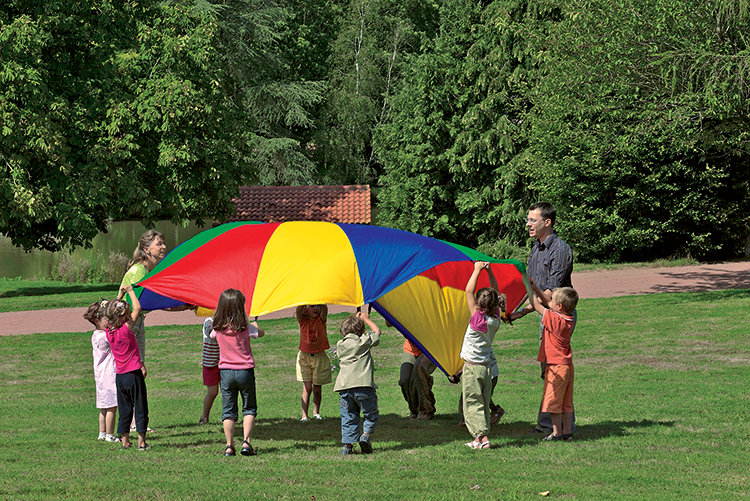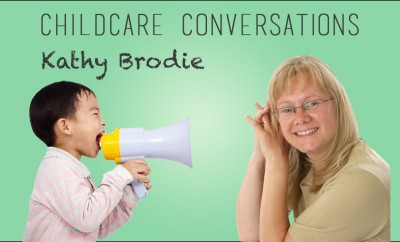
Child Development
Physical Development
[Tweet “‘Play is the work of the child.’ Maria Montessori.”]
With very few exceptions, a child’s physical development will occur through formal or informal play, alone, in a family setting, or amongst his peers. And as most parents and childcare professionals know, the pre-school years are a truly ‘Golden Age’ of motor development when, as research literature shows, ‘the freedom to explore and play… paves the way for learning1.’
Nevertheless, the purpose of play from a child’s perspective is simply enjoyment: a child never consciously engages in play in order to hone a skill, discover how things work, or any of a myriad other things researchers claim to have identified in the varied characteristics of this play. To a child, play is fun and learning and development quite incidental. Even, or especially, when play is structured (organised by adults in order to progress development), it only ‘works’ if it retains the essential spirit of playful activities. In this respect, all adults must take care to avoid presenting such experiential learning as merely a preparation for adulthood: childhood emotions have a unique sharp and intense quality, and to deny children this form of vivid experience is to rob them of an opportunity which may never again occur in quite the same form.
Play and Physical Development
An early attempt to describe play, by Buhler2 (1935), identifies four different categories of play according to its content:
– Functional play emerges first as the practise of primarily physical movements and functions – generally rudimentary kicking and clapping, plus some finer hand movements.
– Fictional play, noticeable in the second year of life, often involves behaviours such as, for example, treating a doll as a real baby.
– Receptive play, in which a child looks at pictures or listens to stories, follows shortly afterwards.
– Constructive play appears around the end of the second year, and involves playing with bricks, drawing, plus playing with sand, mud, and similar natural materials.
To these has been added a fifth category – Play involving rules – i.e. children’s games, usually established around nursery-school age. The first four categories peak around seven years of age whilst games become more important, finally turning into ‘sport’ which may become a lifetime passion.
It can be observed that increasingly refined physical development underpins the satisfactory evolution of Buhler’s categories, which in turn warns us of the danger of neglecting the optimal physical development of a physically or mentally impaired child. This serves not just to condemn the child to repetitive and stereotypical movements, it also denies them access to higher order skills and functions.
[Ask yourself: When was the last time you got their hands dirty?]
Piaget & Gallahue
Child Development Theorist, Piaget3 (1955) holds that during a child’s first two years, all intellectual functioning occurs via sensory and motor experience, and Gallahue4 (1993) reminds us that: ‘Movement is at the very centre of young children’s lives. It is an important facet of all aspects of their development, whether in the motor, cognitive, or affective domains of human behaviour.’
Movement-oriented activities, such as group parachute play, have a rich potential for promoting a child’s social skills. For example, creating an overhead dome whilst sitting inside requires not only co-ordinated movement, but also good teamwork and social skills, whilst elementary football games do the same in a more vigorous context.
The benefits of physical activity in the emotional domain are well understood, and energetic running and chasing activities outdoors are time-honoured positive methods of alleviating the pent-up emotions which crop up frequently in an early years context. Equally important, but more nuanced, creative painting, moulding and manipulating activities not only help to refine hand-eye co-ordination, accuracy, spatial understanding, two-handed co-ordination and fine motor skills, but also provide young children with physical opportunities to express and work through their emotions.
[Read more about: Social & Emotional Development in Childcare]
Further Observations
Eloquently discussing the relationship between physical activity and cognitive development, Henniger5 (2012) observes:
‘… infants beginning to crawl are working hard to master a physical skill that will enable them to explore more fully the home or school environment. At a slightly older age, walking allows toddlers to have even greater opportunities for touching, manipulating, and creating with the objects around them. During the preschool years, building with a set of blocks allows young children to learn about such mathematical concepts as proportionality and number. Finally, the refinement of fine motor skills in play makes it possible for children to succeed with writing tasks in the primary classroom.’
Play in Educational Contexts
Fully committed to the unity of mental and physical activity, Montessori6 (1967) advocates the application of motor skills relevant to the learning task as the most comprehensive educational approach. The Department for Children Schools and Families (DCSF) likewise underline the importance of play-based learning because;
‘i) Playful children use and apply their knowledge, skills and understanding in different ways and in different contexts; and
- ii) Playful practitioners use many different approaches to engaging children in activities that help them to learn and to develop positive dispositions for learning.’
However, their guidance document also warns: ‘Practitioners cannot plan children’s play, because this would work against the choice and control that are central features of play. Practitioners can and should plan for children’s play, however, by creating high quality learning environments, and ensuring uninterrupted periods for children to develop their play.’ DCSF7 (2009).
Given the natural prevalence of physically-active play in child-focused settings, and the assertion by Fisher8 (2008) that parents routinely ascribe more educational value to structured learning activities than ‘play sessions’, it is particularly important for childcare professionals to discuss and examine their in-house arrangements. Not only will this help to clarify underlying educational objectives, it will also ensure a clear and consistent message is relayed to parents.







You must be logged in to post a comment Login